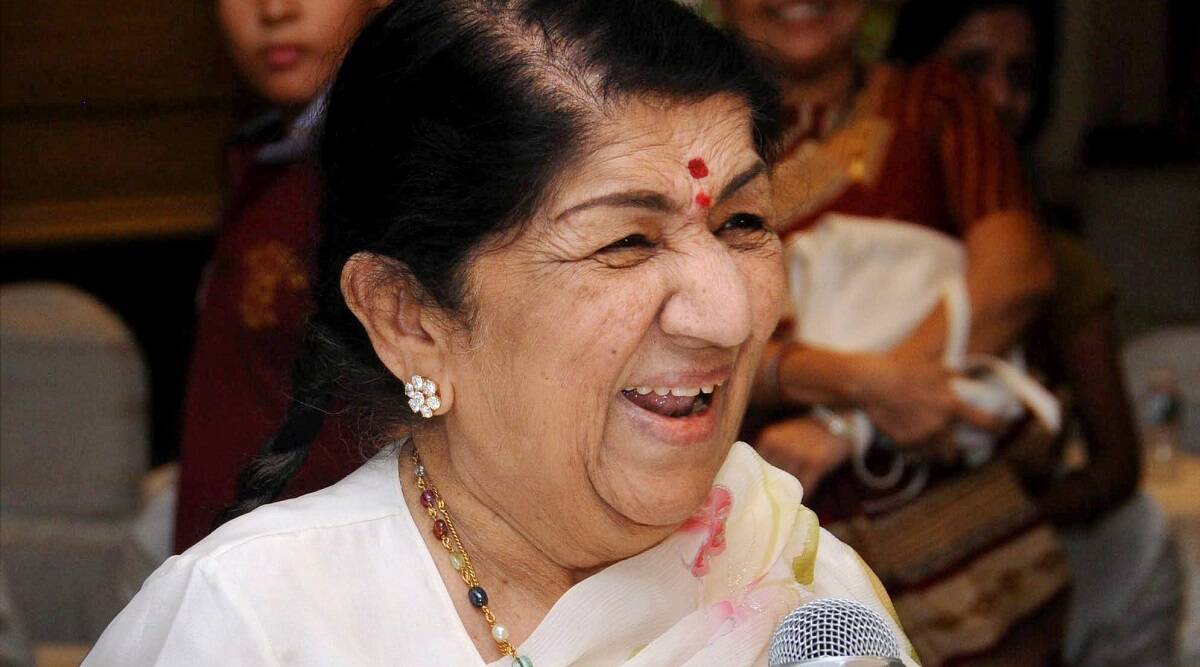 Lata Mangeshkar (File)
Lata Mangeshkar (File) When playback singing was introduced in Indian cinema in 1935, it was not a given that the singer would become a star in their own right. After all, they had to be invisible on-screen. This was a change from the period of singer-actors like K L Saigal. But as this tradition came to be established, Lata Mangeshkar’s career trajectory would show that a “dual star text” — as film scholar Neepa Majumdar calls it — was possible. You could be a fan of Madhubala, as well as of Lata who was singing for her. You didn’t have to choose.
While this stardom was enjoyed by other singers of that time like Mohammad Rafi, Mukesh, Talat Mahmood, Geeta Dutt, Hemant Kumar, Asha Bhosle and Kishore Kumar too, what is peculiar to Lata, is the enduring nature of her career — people have heard her voice age through seven decades and mostly been loyal listeners. Dual stardom ensured that even when her voice clearly did not fit a younger actor like Rani Mukherjee, fans let it go. Realism was not something Hindi cinema trained you in, its pleasures were different.
This absence of realism created its own possibility, the song being the best example. This was the beauty of the Hindi film song sequence. Freed of demands of continuity or realistic characterisation, and yet taken seriously by filmmakers, musicians, lyricists, actors and singers, the song became a space of innovation. And freedom. It could celebrate love even if in real life caste-class barriers prevented it. Another world was possible.
Even within the limited patriarchal imagination of most film narratives, the song could transcend barriers by becoming a space where inner lives were explored. The heroines did this through their expressiveness (often through dance), and Lata did this through her voice. Her star image may have been controlled and sanitised of possible gossip, but once she sang, nothing held her back. Not even her real life association with Hindu right-wing politics.
To be sure it was sought to be tamed through the virgin-vamp binary, which placed the respectable Hindi film heroine in opposition to the bad girl — often the cabaret dancer who would transform into the vamp by the 1960s and 1970s. Lata herself said she didn’t sing “those” kinds of songs (they were reserved for the richly-textured voice of Geeta Dutt or her sister Asha Bhosle). This division was a reminder of the erasure of thumri singers and singer-courtesans that coincided with the rise of Lata. But has it really stood the test of time? In a lovely piece published in Agents of Ishq, Paromita Vohra lists what she calls Lata’s sexy songs and rethinks this binary, which is itself a patriarchal construct.
Whether it is expressing longing in Lag Ja Gale, an erotic-romantic duet like Dum Bhar Jo Udhar Munh Phere or protest in Pyaar Kiya Toh Darna Kya and Jao Re Jogi, a female voice exploring desire was radical even when framed as “respectable” to soften its implication. Written by poet-lyricists and composed by talented composers, these songs do not conform to maintaining the status quo. The voice that brings these words to life, makes them real even as they are utopian.
The film song is often a source of embarrassment today, or is enjoyed ironically. It is treated as something that has to be gotten over in order for Hindi cinema to evolve. In the songs of the 50s and 60s — the “golden era” — which Lata Mangeshkar perhaps best personified, we encounter feeling as feeling. It is not just about her perfect notes; perfection can often leave you cold. It is something else. This is a quality she carried with her to her later songs of the 2000s – like Luka Chuppi from Rang De Basanti or Pyaara Sa Gaon from Zubeidaa. All her best songs embody it. Much before we understand the words, we feel the truth in her voice.
Magazine is a New Delhi-based writer and holds a PhD in film studies
- The Indian Express website has been rated GREEN for its credibility and trustworthiness by Newsguard, a global service that rates news sources for their journalistic standards.

